One of Taiwan’s best food adventures can be found at its ubiquitous rechao (熱炒), or stir-fry joints. Greasy food swinging round the lazy Susan, booze flowing in tiny glasses, cigarette plumes wafting. Once, I downed whiskey shots with a drunken proprietor. Another time I shared a toilet stall with the restaurant’s resident tortoise. I gave up on bringing my parents — oh the horror of the fish tanks outside.
Third Floor (?樓), however, flips the script. We slip back in time through an unremarkable speakeasy-style entrance — and into the coolest courtyard I’ve seen in Taipei. As a European, I miss nothing more than a bit of al fresco, no match for Taipei’s sticky summers.
Giving the illusion of outdoor dining, the three-story courtyard has full-size trees and paved floors, but with comforting finishes of air conditioning and woven bench covers, the warm glow of vintage lamps and 80s Americana beats. It’s a real time-vortex, bursting with retro charm and insider cool.
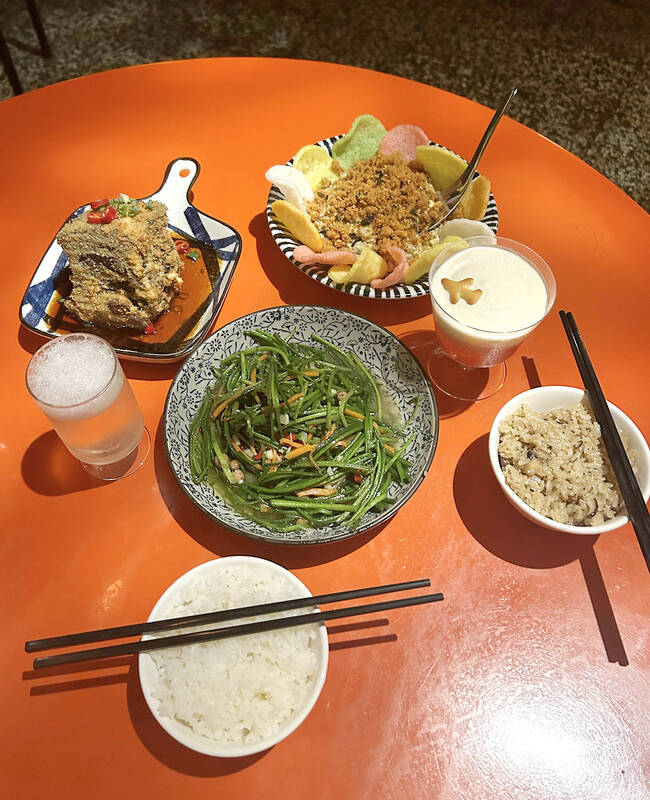
Photo: Hollie Younger
This place is expensive enough to give my local stir-fry boss a conniption. But we see it as more of a vibe tax, an experience in and of itself.
The menu is handwritten in Chinese, pegged onto wooden boards. The waitress recommends sharing two to four dishes between two. So, we grab four, with four cocktails to match — all, of course, in the name of research.
Third Floor’s signature is the Dongpo Rou (NT$420), a beloved Chinese dish of fatty and lean pork belly cubes braised in soy and ginger. Tonight’s other-worldly upgrade is a mighty hunk of meat larger than two of my fists, breadcrumbed and fried, sitting in a pool of inky-black Dongpo sauce.
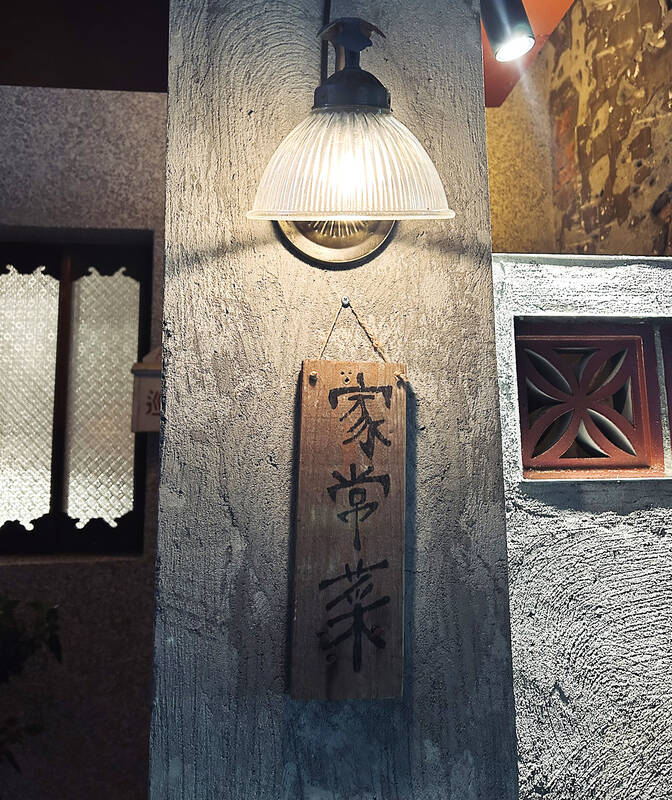
Photo: Hollie Younger
Cutting into the crispy exterior, the pork inside is glistening and comes apart with a fork, falling into the decadent sauce below. This is the dish I’d come back for time and again.
It’s reminiscent of an English roast pork with a stuffing crumb but with a smoky barbecue-like flavor and a hit of chili and Asian aromatics. I’m not a fan of fattier cuts, but this was surprisingly lean. Texturally, it’s a world away from the gummy standard.
We order a three-cup duck breast (NT$350); a familiar find at every stir-fry joint, usually in chicken or mushroom variety. Seeing one of my favorite proteins, I had to try.
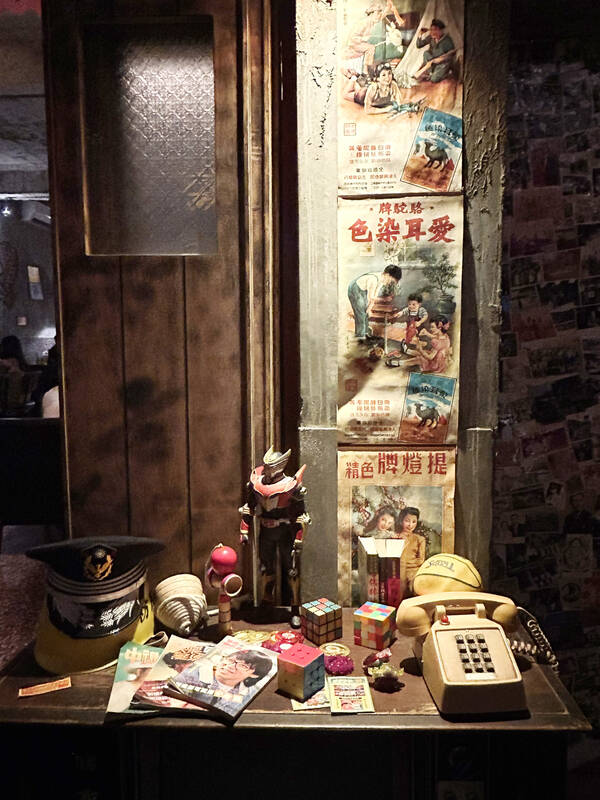
Photo: Hollie Younger
The presentation matches the decor, think an Asian grandma’s floral crockery. The duck breast? A little chewy. But underneath, nuggets of King Oyster mushroom have soaked up all that ginger and chili; it’s heavy on the sesame and bold on the basil.
Next, we get adventurous with our waitress’ recommendation of a childhood staple, Century-egg chopped salad with colorful shrimp crackers (NT$230). We treat it like a Taiwanese chip and guac for the table, intermittently scooping into the cold dip. Not for the uninitiated, these blue-black fermented eggs are salty and tangy — it’s hard to get on board without the nostalgia.
Stir-fry joints typically invite patrons to grab large bottles of Gold Medal at the fridge to crack open at the table. Third Floor instead has a wine list and a pretty out-there cocktail menu.
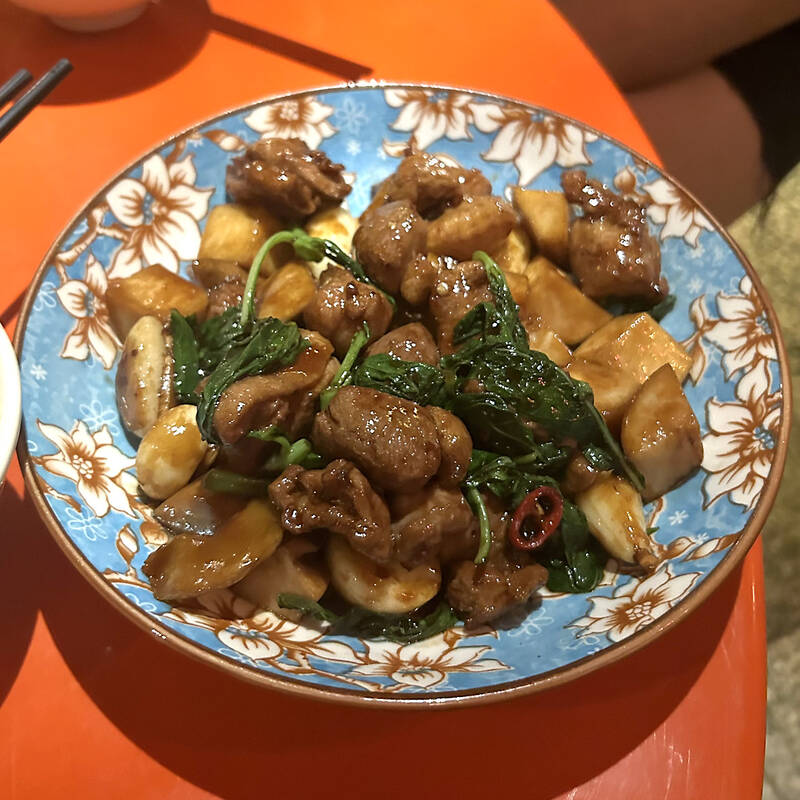
Photo: Hollie Younger
The best was Raspberry, Butter, Goat Milk and Apple (NT$400), a frothy pink concoction that’s sweet and fruity with a bite of goat’s milk. It only gets stranger from here.
If the Dongpo pork dish wasn’t enough, we get daring with the next cocktail, Dongpo Sauce, Laurel (NT$350), as black as soy sauce with a strong whiskey hit. My Peanut Butter, Macadamia cocktail (NT$380) is equally vicious on the palette. The staff did warn us they’d be strong.
The night wraps up with three free shots from our waitress — proof that for all its class, Third Floor hasn’t outgrown its stir-fry roots, serving up Taiwanese culture, family-style dishes and just the right amount of booze.
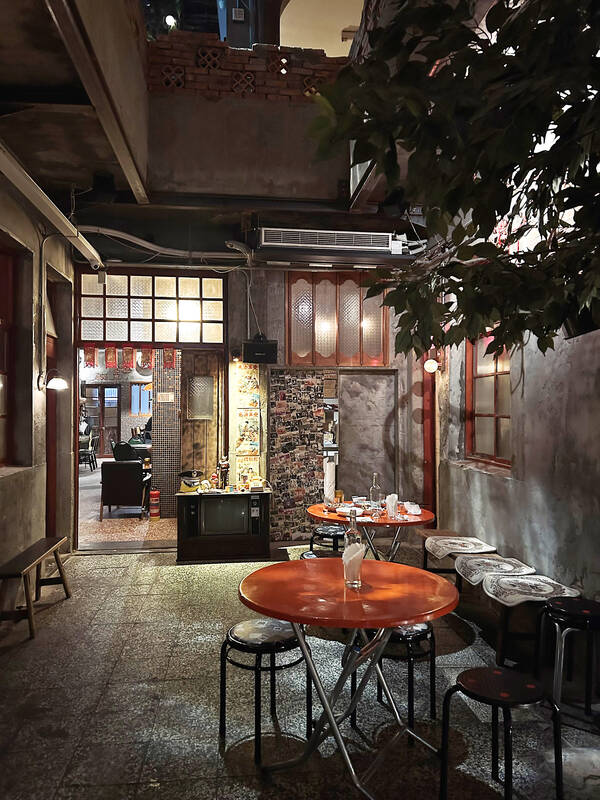
Photo: Hollie Younger

Oct. 27 to Nov. 2 Over a breakfast of soymilk and fried dough costing less than NT$400, seven officials and engineers agreed on a NT$400 million plan — unaware that it would mark the beginning of Taiwan’s semiconductor empire. It was a cold February morning in 1974. Gathered at the unassuming shop were Economics minister Sun Yun-hsuan (孫運璿), director-general of Transportation and Communications Kao Yu-shu (高玉樹), Industrial Technology Research Institute (ITRI) president Wang Chao-chen (王兆振), Telecommunications Laboratories director Kang Pao-huang (康寶煌), Executive Yuan secretary-general Fei Hua (費驊), director-general of Telecommunications Fang Hsien-chi (方賢齊) and Radio Corporation of America (RCA) Laboratories director Pan
The consensus on the Chinese Nationalist Party (KMT) chair race is that Cheng Li-wun (鄭麗文) ran a populist, ideological back-to-basics campaign and soundly defeated former Taipei mayor Hau Lung-bin (郝龍斌), the candidate backed by the big institutional players. Cheng tapped into a wave of popular enthusiasm within the KMT, while the institutional players’ get-out-the-vote abilities fell flat, suggesting their power has weakened significantly. Yet, a closer look at the race paints a more complicated picture, raising questions about some analysts’ conclusions, including my own. TURNOUT Here is a surprising statistic: Turnout was 130,678, or 39.46 percent of the 331,145 eligible party

The classic warmth of a good old-fashioned izakaya beckons you in, all cozy nooks and dark wood finishes, as tables order a third round and waiters sling tapas-sized bites and assorted — sometimes unidentifiable — skewered meats. But there’s a romantic hush about this Ximending (西門町) hotspot, with cocktails savored, plating elegant and never rushed and daters and diners lit by candlelight and chandelier. Each chair is mismatched and the assorted tables appear to be the fanciest picks from a nearby flea market. A naked sewing mannequin stands in a dimly lit corner, adorned with antique mirrors and draped foliage

The election of Cheng Li-wun (鄭麗文) as chair of the Chinese Nationalist Party (KMT) marked a triumphant return of pride in the “Chinese” in the party name. Cheng wants Taiwanese to be proud to call themselves Chinese again. The unambiguous winner was a return to the KMT ideology that formed in the early 2000s under then chairman Lien Chan (連戰) and president Ma Ying-jeou (馬英九) put into practice as far as he could, until ultimately thwarted by hundreds of thousands of protestors thronging the streets in what became known as the Sunflower movement in 2014. Cheng is an unambiguous Chinese ethnonationalist,